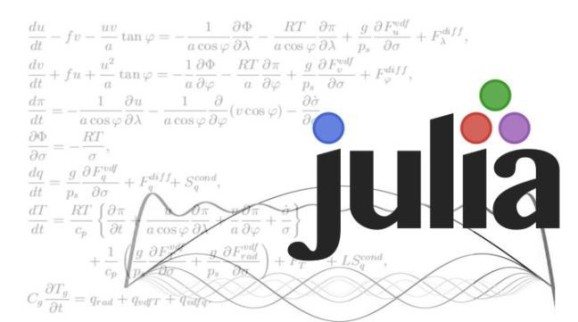Want to share your content on python-bloggers? click here.
Most data scientists favor Python as a programming language these days. However, there’s also still a large group of data scientists coming from a statistics, econometrics, or social science and therefore favoring R, the programming language they learned in university. Now there’s a new kid on the block: Julia.

Advantages & Disadvantages
According to some, you can think of Julia as a mixture of R and Python, but faster. As a programming language for data science, Julia has some major advantages:
- Julia is light-weight and efficient and will run on the tiniest of computers
- Julia is just-in-time (JIT) compiled, and can approach or match the speed of C
- Julia is a functional language at its core
- Julia support metaprogramming: Julia programs can generate other Julia programs
- Julia has a math-friendly syntax
- Julia has refined parallelization compared to other data science languages
- Julia can call C, Fortran, Python or R packages
However, others also argue that Julia comes with some disadvantages for data science, like data frame printing, 1-indexing, and its external package management.
Comparing Julia to Python and R
Open Risk Manual published this side-by-side review of the main open source Data Science languages: Julia, Python, R.
You can click the links below to jump directly to the section you’re interested in. Once there, you can compare the packages and functions that allow you to perform Data Science tasks in the three languages.
Starting with Julia for Data Science
Here’s a very well written Medium article that guides you through installing Julia and starting with some simple Data Science tasks. At least, Julia’s plots look like:
Want to share your content on python-bloggers? click here.